Kerry McKittrick on Creating Better Pathways to Economic Mobility
Key Points
-
Work-based learning, such as internships and apprenticeships, is critical for creating successful pathways to economic mobility.
-
Education systems must partner with industries to ensure pathways remain relevant and agile in a rapidly changing job market.
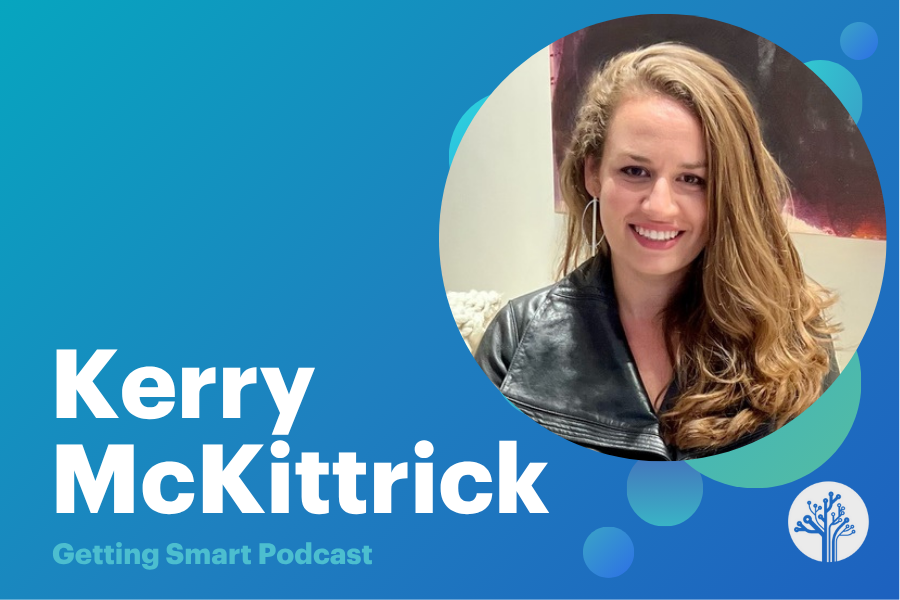
In this episode of the Getting Smart Podcast, Tom Vander Ark dives into the intersection of education and workforce innovation with Kerry McKittrick, Co-Director of Harvard’s Project on Workforce. Together, they explore the evolving job market in the AI era, discussing challenges like the “AI job apocalypse” and the importance of creating agile pathways to economic mobility. Kerry highlights the critical role of work-based learning, industry partnerships, and personalized career navigation to prepare learners for a complex and dynamic workforce. Tune in to hear about the future of work, education’s response, and how regional and adaptive pathways can create equitable opportunities for all.
Outline
- (00:00) Introduction: AI’s Impact on Jobs
- (02:27) Pathways to Economic Mobility
- (04:12) Current Job Market Challenges
- (09:05) Education’s Response to Workforce Changes
- (14:21) Governors’ Role in Workforce Development
- (24:58) Conclusion and Future Work
Introduction: AI’s Impact on Jobs
Tom Vander Ark: We saw a series of disturbing headlines in the second quarter, including the Anthropic CEO claiming that AI could wipe out half of all entry-level white-collar jobs. We also heard that, for some recent grads, the AI job apocalypse may already be here.
That was accompanied by a number of AI-first letters written by Box and Shopify. Also followed on by Amazon, Microsoft, and Google, all suggesting they were going to freeze their hiring and probably shrink over time. And then finally, Jensen Huang from Nvidia said kids shouldn’t learn to code because AI can do the coding for them. You’re listening to the Getting Smart Podcast. I’m Tom Vander Ark, and we’re talking about workforce and pathways today with Kerry McKittrick. She’s the co-director of a project on workforce at Harvard. It’s a very cool interdisciplinary shop. It’s a project between the Harvard Kennedy School, the Business School, and the GSE.
Kerry, welcome to the podcast.
Kerry McKittrick: Thanks for having me, Tom. It’s great to be here.
Tom Vander Ark: I love that you’re kind of suspended there between the Kennedy School, the policy school, the Business School, and the GSE. It seems elegant but probably complicated.
Kerry McKittrick: That’s a good way to put it. It doesn’t come without its challenges, but I think it gives us a really unique space to translate the research for different kinds of actors.
You know, we know oftentimes industry doesn’t necessarily speak the same language as education, right? So we’re able to bring folks together, make sure they’re talking to each other in ways that each understands, as well as bring students together. One of the cool things about our work is we have graduate students from across the schools.
A Person: That’s great.
Kerry McKittrick: In a study group, the teacher talks to the HR leader who talks to the future mayor, and we’re trying to build a workforce—workforce as it were.
Tom Vander Ark: I love that. There are a couple of other similar projects, but they’re focused on economics. And I love that the GSE is involved in this. So, it’s cool to be able to draw from world experts in those different fields.
Pathways to Economic Mobility
Tom Vander Ark: Kerry, your motto on the website says, “Creating better pathways to economic mobility.” We care a lot about pathways here at Getting Smart. But can you unpack that? Is that how you think about your mission?
Kerry McKittrick: It is. I think we think about it in a few ways, so I’ll break that down. Kind of where we focus our research. Taking a step back, I think we all agree that some of the pathways to opportunity are broken. Oftentimes, students only have the opportunity of college or nothing, right? They don’t have multiple ways to earn a good wage and find a fulfilling career. So we look at how to make both the traditional college and community college pathways better, how to connect students to good jobs, as well as how to navigate this broader workforce training ecosystem, looking at those pathways.
And then the third piece I’d say is, what are the structures, the systems, the supports that people need to navigate all of these different ways with the goal of, again, making sure our system is delivering on economic mobility.
Tom Vander Ark: We super appreciate your mission. And man, it couldn’t come at a better time. It feels really paradoxical about this time, particularly for young adults. On one hand, there’s never been more opportunity for them—even work that matters—to contribute to their community using smart tools. That may include launching a business while they’re in school or just out of school, which has never been easier and more affordable to step into contribution.
And then the flip side of that is the headlines that I read at the outset.
Current Job Market Challenges
Tom Vander Ark: AI job apocalypse. But it seems harder for many college grads to find employment. How do you think about this moment in time, particularly the opportunities and challenges for young people, young adults?
Kerry McKittrick: Yeah, I think we need to take a step back a little bit, looking at the labor market. We’ve seen trends in tech happening for a while. I think there are a lot of labor market forces at play here. AI certainly is having an impact, but we don’t know that AI is the cause of all the fears around entry-level jobs, right? And so I think we need to be careful about some of those assumptions. We can certainly say that it is changing what work looks like. I’m using generative AI for quick literature reviews, which previously may have been a graduate student research assistant. We’re shifting all of these things, so work is changing, but we don’t quite know how fast companies are actually adapting. Especially at the small and medium-sized business level, generative AI is impacting work and business, but in many companies, there isn’t a substantial change yet. So we need to be a little bit careful about what we’re saying. You have the massive Amazons making these changes, but most people are employed not by Amazon, right? So, I think it’s a complex issue we need to think about, and it’s really important to understand what actually is happening now through surveys, different types of research, and case studies before we make these big leaps.
Tom Vander Ark: I appreciate that. To make this really specific, if our unemployment rate is hovering around 4.5%, recent college grads may be facing an unemployment rate of more like 6 or 7%. So it’s incrementally higher, but it is not the job apocalypse that some claim this year might be.
Kerry McKittrick: And it depends on the industry too, Tom, right? There are certain industries where you can absolutely get hired. They’re still hiring in healthcare and manufacturing. So this is very industry- and sector-specific.
Tom Vander Ark: And geographically specific, right? It’s a combination of those. What seems unique about this point? We’ve been through a couple of cycles of automation, and we’re clearly headed for another cycle of physical automation, particularly in humanoid robotics. But what’s different about this phase that we’re heading into is the cognitive automation that you described—the changing nature of work that many jobs are seeing. At least certain tasks within that job are being automated. Do you have a sense of how fast that’s going to roll through the economy?
Kerry McKittrick: That’s a great question. Some of our research—David Deming has done some research at Harvard—finds that about 40% of adults are using AI overall, and about 28% are using it for work. So we know this is having an impact. How fast it’s going to run through the job market is a different question. The challenge is it is most likely targeting these white-collar jobs like coders, legal assistants, and financial analysts that we’ve been telling people for a long time are good jobs and have been good jobs. And so I do think, as things evolve, we need to be really agile because the predictions are tough at this point.
Tom Vander Ark: There was a Harvard and HBR report that came out a month ago that had a surprising update on the top 10 uses of AI. At the top of the list for the first time was companionship and therapy. More and more people, at least in their private life, are looking to AI for a mixture of therapeutic uses and general companionship. So that’s an interesting new trend.
Kerry McKittrick: Indeed. That makes me nervous, I have to say. There’s a whole public health issue there, but on an economic mobility frame, we know a lot of people are advancing through social connections. Social capital is a huge way that people get career information and access to other jobs. If people are retreating away from these human relationships, I think there could be a real impact on how people navigate the workforce.
Education’s Response to Workforce Changes
Tom Vander Ark: Let’s dive into the education response to what’s happening in the world. First, I want to go back to your mission of creating better pathways to economic mobility. What is a pathway, and how does a collection of pathways add up to meeting workforce demands?
Kerry McKittrick: We use the term “pathway” a lot in our field. To start, pathways span secondary, postsecondary, and workforce stages. There are also pathways within companies—opportunities for people to build skills, connections, and move forward toward career goals. Depending on the context, pathways may seem straightforward, but often when we’re talking to workers, people are not moving in a straight line. While our system needs to help guide people in certain directions, pathways as an institutional and workforce concept need to accommodate the reality that people move in zigzags, circles, and not always forward.
To take a step back to where you started, I’d say pathways are regional at their core. Oftentimes, there’s an idea that, for example, computer science is in demand nationally, so it must be in demand in my region—not necessarily. It starts with what’s in demand regionally and what employers can be engaged. When we think of pathways, it’s really about aligning and smoothing the transitions between education and work, and doing it in a way that is people-centered—not necessarily how we hope they would move through the labor market or how we think they do, but actually accommodating how they do it in terms of trying out different things and integrating work into their lives in different ways.
Tom Vander Ark: Does your view on pathways increasingly include work-based learning experiences?
Kerry McKittrick: Absolutely. I would say work-based learning is core to any pathway that’s going to be successful. We conducted a literature review of programs and policies within the college ecosystem designed to connect students to good jobs. We called it the College to Jobs initiative. We looked at 13 buckets of interventions, from career coaching to cohort models to internships and experiential learning. Far and away, the strongest evidence that causally links these programs to positive economic outcomes, including employment and earnings, is work-based learning.
Now, I think there are questions about work-based learning, including what dosage folks need and what constitutes a high-quality experience. We have some ideas about that, but I would certainly say workplace experience, which traditionally hasn’t been part of the classroom experience, is 100% critical to pathways—whether they’re in high school, college, or even in a workplace. At a company, having opportunities to explore or try experiences in other departments is another way. So work-based learning can be applied in all settings, I think.
Tom Vander Ark: Our friend Ryan Craig has been a big advocate for apprenticeships over the last five years. More broadly, he would argue that every young person should, at an earlier age, be able to step into an earn-and-learn ladder. Do you see apprenticeships and alternative pathways that include earning and learning opportunities as part of the solution?
Kerry McKittrick: Oh, absolutely. I think they’re one pathway. I wouldn’t necessarily say everyone should go into an apprenticeship or everyone should go to college. There are different opportunities. Registered apprenticeships tend to be the gold standard because they are paid, offer progressive learning, mentorship, and all of these crucial pieces. So I think apprenticeship is absolutely a key piece. We’ve seen some folks integrating apprenticeships into high schools. In some work we’ve done, a survey of governors’ policy advisors found that a quarter of them talked about investing in or integrating youth apprenticeships into their programming. This is definitely a trend, and I think it’s a positive one. But it’s also a resource-intensive and complex strategic type of intervention. When we map the field of work-based learning, we try to provide all the different layers and types—whether it’s internships, co-ops, or apprenticeships—so different institutions and individuals can go through and still get positive results.
Tom Vander Ark: Governors seem to have latched onto workforce as a key issue. Some of them would include a focus on pathways—high-value pathways—certainly as part of that. I think you’ve been responsive to their interest with some recent publications.
Shorts Content
Governors’ Role in Workforce Development
Tom Vander Ark: Tell us about governors reshaping workforce.
Kerry McKittrick: This is a really exciting project that we just finished the first phase of. We’ve been thrilled to partner with the National Governors Association, and we conducted a research project in which we interviewed governors’ workforce policy advisors from 34 states. We asked them a variety of questions and administered more technical surveys on Workforce Innovation and Opportunity Act policies and administrative pieces. We wanted to understand the trends in workforce, the challenges they’re facing, and really how governors play such a pivotal role in their state’s workforce system. Governors sit at the intersection above all the agencies of education, workforce, economic development, and healthcare. They have real power to bring all of these divisions and sectors together in a way that reflects a new approach to workforce as a whole-of-life, whole-of-government trend.
Tom Vander Ark: Let’s talk about support and guidance. You recently published a great report called “Navigating Opportunity.” I think we agree with you that this is a super important space and that there are some exciting developments coming in the guidance space.
Kerry McKittrick: Absolutely. I certainly agree and would love to hear about your work. This is another multi-year research initiative. We conducted a nationally representative survey of low-wage workers across the United States, across ages and industries, and asked a variety of questions about how they navigate their careers. We scoped that definition in terms of acquiring career information, making personal plans, and integrating education and work actions to progress through life.
We found a lot of interesting findings and are currently building on them with focus groups to dive deeper. One of the key pieces—and this may confirm what folks have thought in the field for a long time—is that when people are getting career information, whether it’s about job opportunities or education opportunities, it’s coming from family and friends. Family and friends were the top two sources of information. Interestingly, when we broke that down by primary source of information and looked at folks’ education levels, the less education you have, the more likely you are to rely on family and friends. We need to dive into this role of social capital. It can be a propelling force to positive economic opportunity, but it can also be a limiting force if your social capital doesn’t have knowledge or access to high-paying opportunities. There’s a lot of research—Raj Chetty has done some research on this—but I think there’s a lot we need to dig into in career navigation.
The last thing I’ll say, and I think this is particularly relevant to some of the work you’ve done, is that when we ask folks who they trust the most and who is most helpful, they say teachers and counselors. But only about 10%—8%, actually—have received information from those folks. So there’s clearly a bigger role here for both teachers and counselors to play across education.
Tom Vander Ark: At the high school level, I think something that we observed 30 years ago was that most successful schools had a really strong advisory program. I think that’s true today, maybe even more important than ever. And that advisory program was typically a handcrafted relationship with an advisor and a small group of students meeting several times a week. Unfortunately, we’re seeing some schools eliminate that. It seems really disturbing at a time when students need more guidance, not less guidance. But what we’re optimistic about is the addition of algorithms to smart advisors so that students are really getting thoughtful advice about pathways that combine market information with information about themselves, their interests, and their aptitudes. So I think we’re optimistic about this combination of algorithm plus advisor. Do you buy that?
Kerry McKittrick: You know, I’m a little more skeptical, Tom, I’m going to be honest. And maybe that’s partly my nature when it comes to these kinds of things. But I think that, well, first of all, having the advisor there is crucial, as you’re saying. There needs to be the human element of interpretation. I think a lot of these tools are really early, and I don’t think we have necessarily the safeguards in place. I’ll give you kind of a weird example, but I read an article about how the answer from ChatGPT changes based on whether or not you use punctuation. I don’t know if you saw that.
Kerry McKittrick: So, I thought, well, what if I’m a high schooler asking ChatGPT if I should go to college and I’m using punctuation, or maybe I’m using text speak or whatever. So I put it in just as an experiment to see. This is totally anecdotal, but I got different advice based on whether I used punctuation or not. And the reason I say this is because all of these tools have a lot of different factors that go into them, and I don’t think we’ve thought through enough the evaluation criteria of these tools. I don’t think necessarily education systems and institutions have had the opportunity to both examine and maybe contribute to the evaluation criteria of these tools. It’s not just about the prompt; it’s about how well what comes out matches the equitable outcomes we would hope for.
Tom Vander Ark: What about the interest and aptitude survey markets? We’re seeing steady growth and use starting in middle grades. Are you optimistic about that, or are you concerned about it?
Kerry McKittrick: You know, I’d love to see what it’s based on. I think a lot of our measurements, particularly around what we might call durable skills and some of these other skills, are not fully vetted. David Deming has done some great research at Harvard on leadership skills and has developed a pretty rigorous methodology there. I think before we’re using these aptitude assessments—and I think they can be helpful in certain cases, helping students understand their interests, ideally helping them see opportunities that they wouldn’t envision for themselves—we need to be careful about what the underlying measurements are and how validated they are. There are certainly some validated measures out there that I would be comfortable using. But again, I think it’s a time to be careful and a time to be really critical about evaluation.
Tom Vander Ark: Sometimes these aptitude and interest surveys that combine market surveys would advertise the potential of, you know, the pathway of one sort of a handcrafted pathway that links market information, personal information, and informs sort of next best choices in an individualized course of study. Do you buy that vision, or are we a long way away from that?
Kerry McKittrick: I absolutely buy personalization. I think we need personalization. Whether one pathway is the answer, I think, is up for debate, especially as we’re seeing the labor market change and pathways change all the time. As jobs change—and this kind of goes back to the beginning of our conversation—the pathways themselves will change. So if we’re recommending one pathway to a student, I think we could be in kind of shaky territory. I also think we need to make sure that these pathways are agile and revised and constantly in communication with industry to make sure they’re still relevant.
Tom Vander Ark: Yeah, boy, agility and adaptability are just more important than ever.
Kerry McKittrick: Absolutely.
Tom Vander Ark: You know, we’re seeing that today in the computer science field, and we have this live question of if we teach coding, what kind of coding do we teach? Or is it really computational thinking? These are really live, important questions. So it suggests that this advice that we’re dispensing and that algorithms are dispensing really does need to be dynamic and probably tempered.
Kerry McKittrick: I’m with you there. And I think that is why the involvement of industry leaders is so important in crafting pathways, in exposing students to what the workplace actually looks like. Some of the best examples we’ve seen of some of these shorter-term or even longer-term programs at community colleges are really the ones where the employers and the colleges are partners hand in hand, building things together and making sure that students have the opportunity to apply it in the workplace that might be changing. They have a firsthand seat. And of course, employers too need to put skin in the game for this, right? If they have so much say in the curriculum, which they do—they’re the ones with the jobs—they should be hiring too.
Tom Vander Ark: And supporting work-based learning experiences, right? Both in internships and client projects. We’re talking to Kerry McKittrick. She directs the project on workforce at Harvard.
Conclusion and Future Work
Tom Vander Ark: Kerry, as we start to wrap up, two questions. One, what’s next? What are you working on now or what are you working up towards? And two, just as you think about your first couple of years of contribution there at the project on workforce, who are you grateful for? Are there folks that you’d like to give a shout-out to that have contributed to your work and to the field?
Kerry McKittrick: Thank you for asking that. So many folks. The faculty leads are just tremendous. I learn so much from them every day—Joe Fuller at the Business School, Rafael Sdo, also at the Business School, Peter Blair at the Education School, David Deming at the Kennedy School, and I can’t forget Bob Schwartz. I’m sure you know Bob. We’ve written some pieces together.
Tom Vander Ark: On the podcast a few times.
Kerry McKittrick: He is a wealth of knowledge, and I won’t let him retire. He is still in our orbit, so I’m so grateful for him. And then I’d have to say the project—we’re really new, actually. We were founded during the pandemic by Rachel Lipson and the faculty. She was a core driving force at the beginning. Without naming everyone on our team, I do have to call out my co-director, Natalie Gne. We’re a good team. We got really lucky there.
But I’ll just share one thing we’re working on now, which I think is going to be particularly relevant to your listeners. We are the research partner for Bloomberg Philanthropies’ Healthcare Career and Technical Education Initiative.
Kerry McKittrick: Over the next few years, we are going to be looking at how these partnerships between hospitals and high schools are building CTE pathways to good jobs in healthcare. We’re going to be seeing what the outcomes are for students, what the ROI is for hospitals, and what it looks like for communities. Hopefully, we’ll take a rapid approach to learning that will help us contribute to the cohort’s improvement over time—there are about 10 schools now—as well as the broader field and different sectors that want to explore these partnership-type high schools. So we’re excited about that and should have some things coming soon.
Tom Vander Ark: We really appreciate that work. In the show notes, I’m going to include a blog that we did about Uplift Education in Texas.
Kerry McKittrick: Oh, great.
Tom Vander Ark: Their terrific CEO, Yasmin Bhatia, was the recipient of one of those Bloomberg grants and is just doing really great work on crafting health pathways in partnership with the Baylor Med Center. Love to hear that you’re involved in that. Related to that, we’re excited about Bloomberg’s support for some P-TECH schools.
A Person: Mm-hmm.
Tom Vander Ark: Models that combine an early college model and work-based learning. They’re growing like crazy in Texas in rural and urban settings. A lot of exciting work going on, and we appreciate your leadership in this space. Kerry, thanks for joining us.
Kerry McKittrick: Thanks for having me. This has been a great conversation, and I always love learning from this podcast. So happy to be here. Thanks, Tom.
Tom Vander Ark: Thanks to our producer, Mason Pashia, and the whole Getting Smart team that makes this possible. Until next week, keep learning, keep leading, and keep innovating in pathways. See you next week.
Guest Bio
Kerry McKittrick is a Co-Director of the Harvard Project on Workforce, where she leads the Project’s policy, strategy, and partnership agenda to increase its impact in the field. She also spearheads multiple research initiatives focused on building more effective and equitable education pathways to economic mobility.
Prior to joining the Project on Workforce, Kerry was a Senior Manager at Jobs for the Future, where she worked closely with the CEO and Chief of Staff to develop and oversee a diverse portfolio of strategic projects. Before that, she served as a Senior Policy Advisor on education, workforce, and child welfare policy to Congressman Jim Langevin, co-chair of the bipartisan Career and Technical Education Caucus and champion of the 2018 Carl D. Perkins Act reauthorization. Kerry began her career in politics, serving as the successful campaign manager for Massachusetts State Representative Ken Gordon.
Links
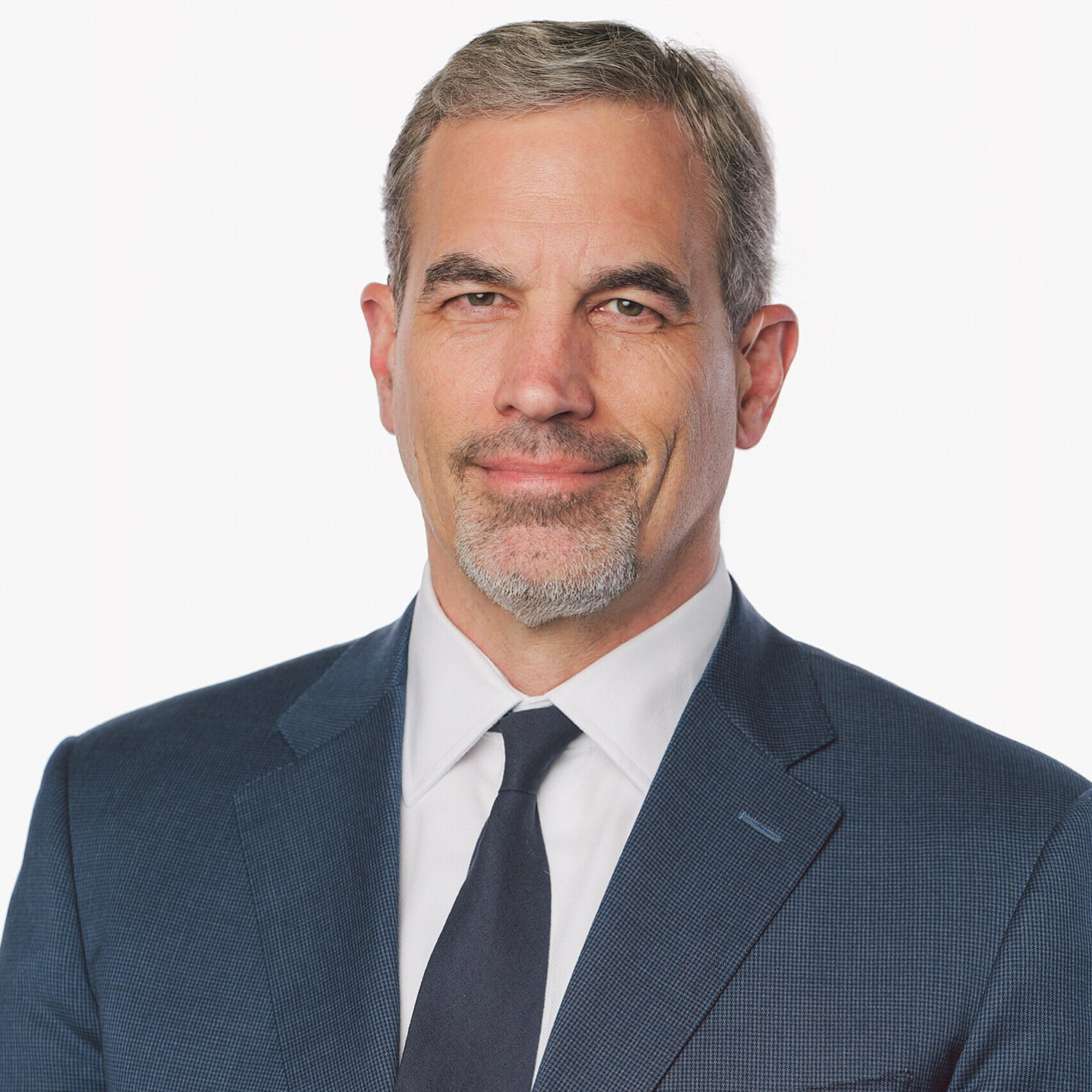


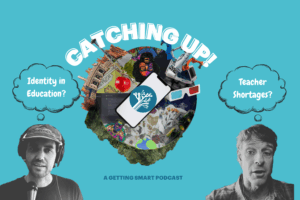
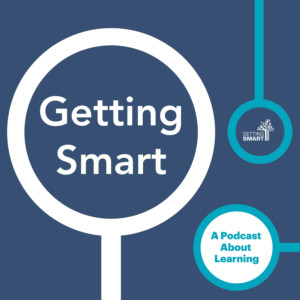


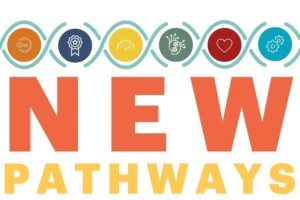

0 Comments
Leave a Comment
Your email address will not be published. All fields are required.